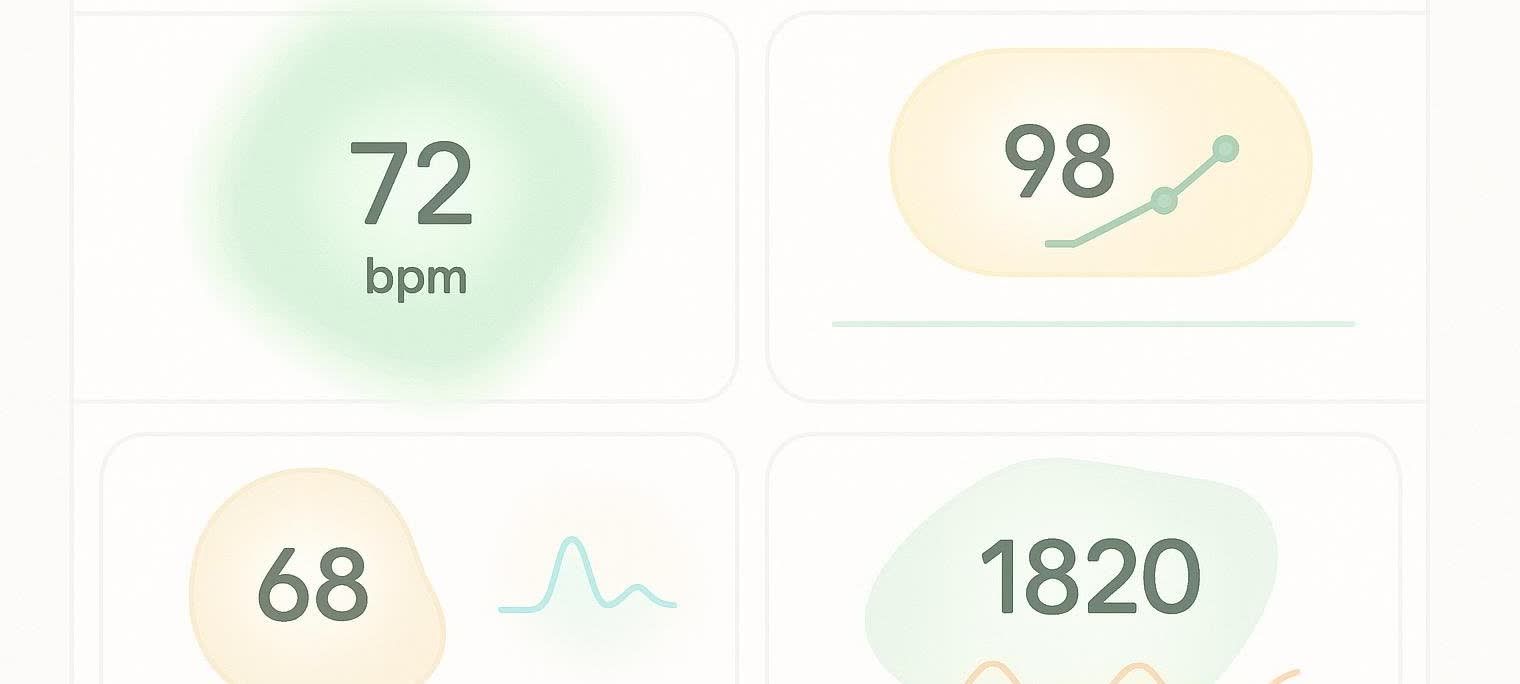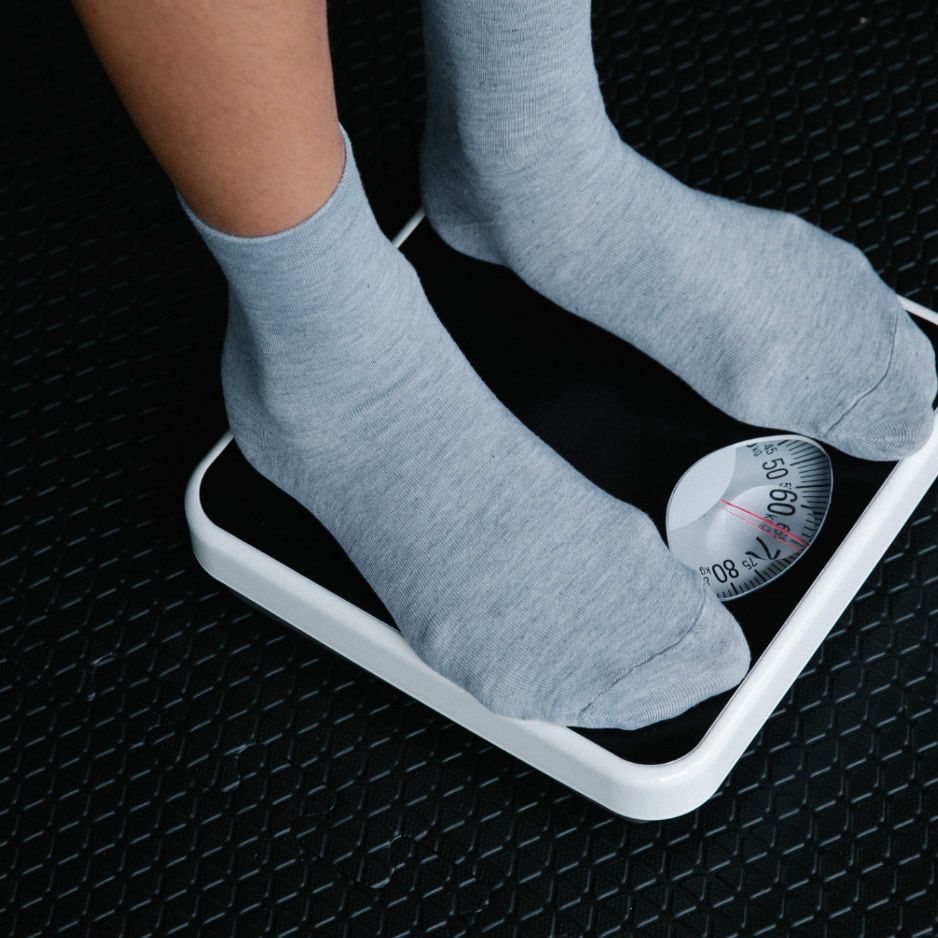Full Body Scan 101: MRI, CT, and DEXA Options Explained

Full Body Scan 101: Complete Guide to MRI, CT, PET, DEXA & Ultrasound Options
Updated December 2025
Want to know what's happening inside your body? Full-body scans use advanced imaging to detect everything from hidden cancers to body composition metrics—but with 7+ different types available, choosing the right scan (and understanding if you even need one) can be overwhelming. This guide, updated for 2025, compares costs, safety, and use cases to help you make an informed decision.
Table of Contents
- What is a full body scan?
- Complete comparison: 7 types of full-body scans
- How much does a full body scan cost?
- Is a full body scan safe?
- Who should (or shouldn't) consider a full body scan?
- How to choose the right scan for your goals
- Real-world scanning scenarios
- FAQs
What is a full body scan?
A full body scan is a comprehensive medical imaging procedure that examines multiple regions of your body—from head to pelvis—in a single session. Different technologies serve different purposes: MRI and CT scans search for tumors and structural abnormalities, PET scans highlight metabolic activity to detect cancer, ultrasound visualizes organs without radiation, and DEXA scans measure body composition and bone density.
The term "full body scan" most commonly refers to whole-body MRI or low-dose CT for preventive cancer screening, though these preventive scans remain controversial in mainstream medicine for average-risk individuals.
Important distinction: Diagnostic scans (ordered by doctors for specific symptoms) serve a different purpose than preventive wellness scans (self-initiated for screening). This guide covers both but focuses on helping you understand when each approach makes sense.
At BodySpec we perform DEXA body-composition scans that measure fat, muscle, visceral fat, and bone density. DEXA provides actionable wellness metrics you can improve through training and nutrition. Many clients pair periodic DEXA scans with age-appropriate cancer screenings recommended by the National Cancer Institute.
Complete comparison: 7 types of full-body scans
| Scan Type | What It Detects | Scan Time | Radiation | Best For | Cost Range |
|---|---|---|---|---|---|
| Whole-Body MRI | Soft tissues, organs, tumors, joint issues | 45–90 min | None | High-risk cancer syndromes, comprehensive soft-tissue survey | $1,350–$2,695 |
| Low-Dose Full-Body CT | Lungs, bones, coronary arteries, skeletal lesions | 5–10 min | 10–20 mSv | Trauma assessment, lung screening for smokers, rapid imaging | $700–$1,300 |
| PET/CT Scan | Metabolic activity, cancer staging, metastases | 60–90 min | 14–30 mSv | Cancer diagnosis and staging, treatment monitoring | $3,000–$6,000 |
| PET/MRI Scan | Soft-tissue cancers with metabolic detail | 60–120 min | 7.5 mSv (PET only) | Brain tumors, soft-tissue cancers, pediatric oncology | $4,000–$8,000 |
| Full-Body Ultrasound | Abdominal organs, blood vessels, soft tissues | 30–60 min | None | Liver/kidney screening, vascular imaging, pregnancy-safe option | $500–$1,500 |
| Coronary Calcium Score CT | Calcium deposits in heart arteries | 5–10 min | 1–3 mSv | Cardiovascular risk assessment, heart disease prevention | $100–$400 |
| DEXA Body Composition | Body fat %, visceral fat, lean mass, bone density | 6–10 min | 0.003 mSv | Wellness tracking, weight loss monitoring, osteoporosis risk, metabolic health | $40–$50 |
Deep dive: When to use each scan type
Whole-Body MRI
Technology: Uses powerful magnetic fields and radio waves to create detailed cross-sectional images of soft tissues throughout the body.
What it's best for: MRI excels at detecting tumors in soft tissues like the brain, liver, pancreas, prostate, ovaries, and spine. It's the most comprehensive option for visualizing organs and can catch sub-centimeter lesions that other modalities might miss.
Limitations: Long scan times (45-90 minutes) can be uncomfortable, and claustrophobia is common. Cannot detect calcium deposits or lung nodules as effectively as CT. Very expensive for preventive screening.
Who it's for: Individuals with confirmed genetic cancer syndromes (Li-Fraumeni, Lynch syndrome, BRCA with prior cancer), those with strong family histories requiring surveillance, or people with unexplained symptoms after normal standard testing.
Low-Dose Full-Body CT
Technology: Uses X-ray beams from multiple angles to create detailed cross-sectional "slices" of the body, compiled into 3D images.
What it's best for: CT is unmatched for lung imaging, detecting coronary artery calcium, and visualizing bones. Low-dose protocols reduce but don't eliminate radiation exposure. The USPSTF recommends low-dose CT chest scans for current or former smokers aged 50+ as evidence-based lung cancer screening.
Limitations: Involves significant radiation (10-20 mSv = approximately 3-7 years of background radiation). Not recommended for repeated annual use in low-risk adults. Higher false-positive rates than MRI for soft tissues.
Who it's for: Current/former smokers meeting USPSTF screening criteria, individuals needing rapid trauma assessment, or those specifically evaluating coronary artery disease risk when combined with calcium scoring.
PET/CT Scan
Technology: Combines metabolic imaging (PET) with anatomical imaging (CT) by using a radioactive tracer—typically fluorodeoxyglucose (FDG)—that highlights areas of high metabolic activity.
What it's best for: PET/CT is the gold standard for cancer staging, detecting metastases, and monitoring treatment response. The combination shows both where abnormalities are (CT) and how active they are metabolically (PET).
Limitations: High radiation exposure (14-30 mSv), expensive, and requires injection of radioactive tracer. Not appropriate for preventive screening in healthy individuals—primarily used after cancer diagnosis. Requires 30-90 minute wait time after tracer injection.
Who it's for: Patients with confirmed or suspected cancer needing staging workup, monitoring response to chemotherapy or radiation, or detecting cancer recurrence. Not for wellness screening.
PET/MRI Scan
Technology: Newer hybrid technology combining PET's metabolic imaging with MRI's superior soft-tissue contrast, offering lower radiation than PET/CT.
What it's best for: Soft-tissue cancers where MRI's superior contrast is advantageous—brain tumors, head/neck cancers, liver lesions, and pelvic malignancies. Particularly valuable in pediatric oncology to minimize radiation.
Limitations: Very expensive ($4,000-$8,000), limited availability, and long scan times (60-120 minutes). Not widely covered by insurance for preventive purposes.
Who it's for: Highly specialized use cases in oncology, typically brain and soft-tissue cancer staging. Rarely appropriate as first-line imaging.
Full-Body Ultrasound
Technology: Uses high-frequency sound waves transmitted through a handheld transducer to create real-time images of internal organs and blood flow.
What it's best for: Excellent for visualizing abdominal organs (liver, kidneys, gallbladder, pancreas, spleen), pelvic organs (uterus, ovaries, prostate, bladder), thyroid, and blood vessels. Completely radiation-free and safe for frequent monitoring.
Limitations: Cannot penetrate bone or air-filled structures (lungs, bowel). Image quality is operator-dependent and may miss small lesions. Less detailed than MRI or CT for deep structures.
Who it's for: Individuals seeking radiation-free screening, pregnant women, those with liver disease risk factors, vascular concerns, or people wanting affordable baseline organ assessment. Good complementary scan to DEXA for comprehensive wellness picture.
Coronary Calcium Score CT
Technology: Specialized low-dose CT focused exclusively on detecting and quantifying calcium deposits in coronary arteries.
What it's best for: Providing a calcium score (Agatston score) that predicts cardiovascular disease risk. A score of zero suggests very low short-term risk; higher scores indicate increasing plaque burden and heart attack risk.
Limitations: Only shows calcified plaque, missing "soft" plaque that can also cause heart attacks. One-time screening—repeating doesn't add value if you've ever scored above zero. Not covered by most insurance.
Who it's for: Adults aged 40-70 with intermediate cardiovascular risk (family history, high cholesterol, hypertension) who are deciding whether to start statin therapy. Not for low-risk or already-diagnosed CAD patients.
DEXA Body Composition Scan
Technology: Uses dual-energy X-ray beams at two different energy levels to differentiate between bone, lean tissue, and fat tissue with exceptional precision.
What it's best for: The gold standard for tracking body composition, DEXA scans provide the most accurate measurements of body fat percentage, lean muscle mass, dangerous visceral fat around organs, and bone mineral density. Unlike cancer screening scans, DEXA tracks metrics you can directly improve through diet and nutrition strategies and exercise and training.
Radiation exposure: At 0.003 mSv, a DEXA scan delivers the same radiation as eating four bananas—making it safe for quarterly or even monthly tracking.
Cost & accessibility: BodySpec DEXA scans start at $40 per scan with a monthly membership ($39.95/month for 1 credit) or $50 per scan with a quarterly membership ($49.95/quarter for 1 credit). One-time scans are also available. All scans are FSA/HSA eligible, making them an affordable investment in your health data.
Who it's for: Anyone focused on weight loss and sustainable strategies, muscle building, athletic performance, metabolic health optimization, or osteoporosis prevention. Ideal for tracking progress every 3-6 months.

How much does a full body scan cost?
Important note: Preventive full-body imaging is rarely covered by insurance. Most providers accept FSA/HSA funds—verify all costs, including potential follow-up testing, before scheduling.
| Provider/Type | Modality | Approximate Price | Insurance Coverage | Payment Options |
|---|---|---|---|---|
| Prenuvo | Whole-Body MRI | $2,499 | Rarely covered | FSA/HSA accepted |
| Ezra | MRI (with optional CT chest) | $1,350–$2,695 | Rarely covered | FSA/HSA accepted |
| Superior Body Scan | Low-Dose CT | $700–$1,300 | Rarely covered | FSA/HSA accepted |
| Hospital PET/CT | PET/CT Scan | $3,000–$6,000 | Sometimes covered for diagnosed cancer | Check with oncologist |
| Academic Center PET/MRI | PET/MRI Scan | $4,000–$8,000 | Rarely covered | Research protocols may reduce cost |
| UDS Health / Craft Body Scan | Full-Body Ultrasound | $500–$1,500 | Rarely covered | FSA/HSA accepted |
| Hospital Cardiac Imaging | Coronary Calcium Score | $100–$400 | Sometimes covered | Self-pay common |
| BodySpec | DEXA Body Composition | $40–$50 | Rarely covered | FSA/HSA eligible, membership discounts available |
BodySpec pricing details: Monthly membership: $40/scan ($39.95/month for 1 credit), Quarterly membership: $50/scan ($49.95/quarter for 1 credit). Credits never expire and are transferable. One-time scans also available at select locations.
For detailed DEXA pricing by location, see "How Much Does a DEXA Scan Cost in 2025?"
Hidden costs to consider
Beyond the scan itself, budget for potential follow-up expenses:
- Incidental findings often trigger additional imaging ($500-$3,000+)
- Biopsy procedures if lesions are found ($1,000-$5,000+)
- Specialist consultations to interpret results ($200-$500 per visit)
- Anxiety and time costs during the workup process
A 2019 systematic review in the Journal of Magnetic Resonance Imaging found ~16% false-positive rates for preventive whole-body MRI, meaning roughly 1 in 6 scans leads to unnecessary follow-up testing.
Is a full body scan safe?
Radiation exposure comparison
| Modality | Radiation Dose | Equivalent To | Safe for Repeat Use? |
|---|---|---|---|
| Whole-Body MRI | 0 mSv | None | ✅ Yes (no radiation) |
| PET/MRI | 7.5 mSv (from PET only) | ~2.5 years background | ⚠️ Minimize frequency |
| Low-Dose CT (Full Body) | 10–20 mSv | 3–7 years background | ❌ Not recommended annually |
| PET/CT | 14–30 mSv | 5–10 years background | ❌ Only when medically necessary |
| Coronary Calcium Score CT | 1–3 mSv | 4–12 months background | ⚠️ One-time screening |
| Full-Body Ultrasound | 0 mSv | None | ✅ Yes (no radiation) |
| DEXA | 0.003 mSv | 9 hours background / 4 bananas | ✅ Yes (safe for monthly tracking) |
Reference: Average background radiation exposure is approximately 3 mSv per year from natural sources.
Non-radiation risks
Even radiation-free scans carry risks:
False Positives & Anxiety: A 2024 NPR investigation warned that preventive scans often uncover "incidental findings" that lead to unnecessary worry, follow-up testing, and invasive procedures. As Dr. Matthew Davenport (University of Michigan) notes in his 2023 research published in the American Journal of Roentgenology, these findings trigger "cascades of care" with potentially more harm than benefit.
Overdiagnosis: Some detected abnormalities would never cause symptoms in a patient's lifetime. Early intervention in these cases exposes patients to treatment risks without actual benefit.
Claustrophobia & Discomfort: MRI machines are enclosed and noisy; scans lasting 60-90 minutes can be challenging for those with anxiety or physical limitations.
Contrast Reactions: Some MRI and CT protocols use gadolinium or iodinated contrast dyes. Allergic reactions are rare but possible, and gadolinium is avoided in severe kidney disease.

Who should (or shouldn't) consider a full body scan?
When preventive full-body imaging makes sense
| Scenario | Recommended Approach | Medical Evidence Level |
|---|---|---|
| Confirmed high-risk cancer syndrome (Li-Fraumeni, Lynch syndrome, BRCA with prior cancer) | Whole-Body MRI every 1-2 years under oncologist guidance | ✅ Supported by medical societies |
| Current or former smoker, age 50+ (20+ pack-years) | Low-Dose CT chest scan annually | ✅ USPSTF Grade B recommendation |
| Intermediate cardiovascular risk, age 40-70 | Coronary Calcium Score CT (one-time) | ⚠️ May inform statin decision |
| Strong family history of early heart disease | Coronary Calcium Score + cardiologist consultation | ⚠️ Case-by-case basis |
| Tracking body composition & metabolic health | DEXA scan every 3-6 months | ✅ Low-risk wellness monitoring |
| Pregnancy-safe organ screening | Full-Body Ultrasound (no radiation) | ✅ Safe for liver/kidney/vascular assessment |
When preventive scanning is NOT recommended
Average-risk adults seeking "peace of mind": Major medical organizations including the American College of Radiology (ACR) and American College of Preventive Medicine (ACPM) explicitly recommend against routine whole-body scans in asymptomatic adults without specific risk factors.
As ACPM President Dr. Mirza Rahman stated in response to celebrity promotion of these scans: "The benefits are not outweighed by the risks." The potential harms—false positives, unnecessary biopsies, radiation exposure, and financial costs—exceed the benefits for most low-risk individuals.
Better alternatives for average-risk adults:
- Evidence-based age-appropriate cancer screenings (mammography, colonoscopy, cervical cancer screening per USPSTF guidelines)
- Annual physical exams with bloodwork
- Regular DEXA scans to track modifiable metabolic health metrics
- Healthy lifestyle interventions (exercise, nutrition, stress management)
How to choose the right scan for your goals
Use this decision framework to identify the most appropriate imaging for your situation:
Step 1: Define your primary goal
Cancer screening / Early detection:
- High genetic risk? → Whole-Body MRI (with oncologist)
- Smoker age 50+? → Low-Dose CT chest (evidence-based)
- Average risk? → Age-appropriate standard screenings (mammogram, colonoscopy) + watchful wellness
Heart disease risk assessment:
- Intermediate risk, debating statins? → Coronary Calcium Score CT
- Already diagnosed with CAD? → Imaging per cardiologist; calcium score not helpful
- Low risk? → Standard lipid panel and BP monitoring sufficient
Body composition & metabolic health:
- Track fat loss and sustainable weight loss? → DEXA scan every 3-6 months
- Monitor visceral fat trends? → DEXA scan
- Assess bone density risk? → DEXA scan
General wellness / Longevity optimization:
- Radiation-free organ check? → Full-Body Ultrasound
- Comprehensive metabolic tracking? → DEXA + standard bloodwork
- True "comprehensive" imaging? → Consult physician about appropriateness
Step 2: Consider your risk profile
High-risk individuals (genetic syndromes, heavy smoking history, strong family history):
- Medical surveillance with targeted imaging is appropriate
- Work with specialists to create screening protocol
- Insurance may cover some surveillance imaging
Average-risk individuals:
- Focus on evidence-based screenings at appropriate ages
- Consider DEXA for modifiable health metrics
- Avoid expensive preventive MRI/CT without specific indication
Symptomatic individuals:
- Do not self-order imaging
- See your primary care physician first
- Diagnostic workup should be guided by symptoms and exam findings
Step 3: Evaluate budget and frequency needs
One-time / Infrequent Assessment ($100-$500):
- Coronary Calcium Score CT (one-time)
- Full-Body Ultrasound (every 1-2 years)
Moderate Budget / Annual or Biannual ($700-$2,700):
- Low-Dose CT chest for qualifying smokers (annually)
- Whole-Body MRI for high-risk surveillance (every 1-2 years)
Affordable / Frequent Tracking ($40-$50 per scan):
- DEXA body composition (every 3-6 months)
- Most cost-effective for actionable wellness data
- FSA/HSA eligible, membership discounts available
Step 4: Consult with your physician
Before any preventive scan:
- Discuss your specific risk factors and family history
- Understand potential benefits AND harms
- Get a referral if insurance coverage is important
- Ask about evidence supporting the scan for your situation
Real-world scanning scenarios
Patricia (45) – Peace-of-mind seeker learns about false positives
After a close friend's cancer diagnosis, Patricia paid $2,500 for a whole-body MRI despite being average-risk with no symptoms. The scan detected a 6mm liver lesion classified as "indeterminate." Over the next three months, she underwent follow-up MRI with contrast ($1,800), consultation with a hepatologist ($400), and finally an MRI-guided biopsy ($3,500) that revealed a benign hemangioma—a common, harmless blood vessel cluster present in 5-10% of adults.
Total cost: $8,200. Emotional toll: significant anxiety during the workup period. Outcome: The lesion required no treatment and would never have caused problems.
Patricia's new approach: She now combines age-appropriate cancer screenings (recently had her first mammogram at 45) with twice-yearly BodySpec DEXA scans at $50 each (quarterly membership). The DEXA revealed elevated visceral fat—a modifiable risk factor she's addressing through evidence-based weight loss strategies. She's tracking progress every 6 months with concrete data she can act on.
Alex (55) – Appropriate high-risk surveillance
Genetic testing revealed Lynch syndrome, a hereditary condition that dramatically increases colorectal, endometrial, and other cancer risks. Under his oncologist's guidance, Alex follows a rigorous surveillance protocol:
- Colonoscopy every 1-2 years (covered by insurance as medical necessity)
- Whole-body MRI every 2 years (partially covered)
- Annual bloodwork and physical exams
Additionally, Alex uses quarterly BodySpec DEXA scans to monitor his body composition during cancer risk-reduction efforts, ensuring he maintains lean muscle mass while controlling visceral fat through strength training and nutrition optimization.
For Alex, comprehensive imaging is appropriate and potentially life-saving given his confirmed genetic risk.
Marcus (58) – Smart use of coronary calcium scoring
Marcus has high cholesterol (LDL 145 mg/dL) and a family history of heart disease (father had heart attack at 62), but no symptoms. His cardiologist recommended either starting a statin immediately or getting a coronary calcium score to guide the decision.
He opted for the $150 calcium score CT, which revealed a score of 135—moderate plaque burden placing him in the 75th percentile for his age. This objective data motivated him to start statin therapy and commit to exercise and dietary changes.
Marcus avoids repeat calcium scoring (once you have plaque, the test doesn't need repeating) but tracks his overall health progress with semi-annual DEXA scans, monitoring visceral fat reduction and muscle mass preservation as he optimizes his cardiovascular health.
Jasmine (32) – Data-driven fitness tracking
Jasmine is a competitive CrossFit athlete focused on optimizing her body composition for performance. She tried a $1,350 whole-body MRI marketed for wellness but found the hour-long scan uncomfortable and the results unhelpful for her goals—the radiologist's report noted "no acute findings" but offered no actionable data.
She switched to quarterly BodySpec DEXA scans at $50 each (quarterly membership), which provide:
- Precise body fat percentage tracking by body region
- Lean muscle mass measurements to assess training effectiveness
- Visceral fat monitoring
- Bone density and strength tracking to prevent stress fractures
Total annual cost: $200 vs. the $1,350+ she'd spend on wellness MRIs that provide less useful information for her fitness goals. She downloads her DEXA results into her personal health dashboard and adjusts her training and nutrition based on quarterly trends.

FAQs
Q: Will insurance cover a preventive full-body scan?
A: Rarely. Preventive whole-body MRI or CT is almost never covered by insurance for average-risk adults without symptoms. Evidence-based screenings like USPSTF-recommended low-dose CT for qualifying smokers may be covered. Some FSA/HSA accounts can be used for preventive imaging, but verify first.
Q: How often should I get a full-body scan?
A: For most people: never. No major medical organization recommends routine full-body imaging for average-risk asymptomatic adults. If you're high-risk and under medical surveillance, frequency should be determined by your oncologist or specialist—typically every 1-2 years for whole-body MRI. For DEXA body composition tracking, every 3-6 months is safe and effective.
Q: Can a full-body MRI detect lung cancer?
A: MRI can miss small lung nodules (under 4mm) that CT easily catches. That's why low-dose CT, not MRI, is the USPSTF-recommended lung cancer screening for high-risk adults (current/former smokers aged 50+ with 20+ pack-year history).
Q: Are PET scans good for preventive cancer screening?
A: No. PET scans are designed for staging and monitoring known cancers, not for screening healthy individuals. They involve significant radiation (14-30 mSv) and high cost ($3,000-$6,000). PET scans have high false-positive rates when used for screening and are not recommended by any medical society for this purpose.
Q: What's the difference between a coronary calcium score and a full-body CT?
A: A coronary calcium score is a targeted, low-dose CT focused exclusively on your heart arteries (1-3 mSv, $100-$400). A full-body CT scans your entire torso with higher radiation (10-20 mSv, $700-$1,300). For cardiovascular risk assessment, the focused calcium score is more appropriate and cost-effective.
Q: Is ultrasound as good as MRI or CT?
A: Ultrasound excels at visualizing abdominal organs, blood vessels, and soft tissues—with zero radiation. However, it cannot penetrate bone or air-filled spaces (lungs, bowel), and image quality depends on operator skill. Think of ultrasound as complementary to, not a replacement for, other modalities. It's excellent for liver/kidney screening, vascular assessment, and pregnancy-safe imaging.
Q: Can DEXA scans replace preventive MRI or CT for cancer screening?
A: No. DEXA scans measure body composition and bone density—they are not designed for tumor detection. However, DEXA and cancer screening scans serve completely different purposes and can be complementary. While you follow age-appropriate cancer screening guidelines (mammography, colonoscopy, etc.), DEXA provides frequent, low-cost tracking of metabolic health markers you can directly improve. At $40-50 per scan (FSA/HSA eligible), it's an affordable complement to other imaging.
Q: What's the difference between "diagnostic" and "wellness" DEXA scans?
A: Diagnostic DEXA is ordered by physicians for medical conditions (osteoporosis diagnosis, fracture risk assessment) and may be covered by insurance. Wellness DEXA from BodySpec uses identical technology but focuses on body composition tracking for fitness and health optimization. Both provide the same quality data; the difference is in how it's used. Learn more in "Understanding DEXA Scans: The Gold Standard for Measuring Body Composition".
Q: I have a family history of cancer. Should I get a whole-body MRI?
A: Family history alone doesn't necessarily warrant whole-body imaging. Discuss with your doctor:
- How many relatives were affected?
- How close are the relatives (first-degree vs. distant)?
- How young were they at diagnosis?
- Have you had genetic testing for hereditary cancer syndromes?
If you have a confirmed genetic syndrome (BRCA, Lynch, Li-Fraumeni), then yes—surveillance imaging is appropriate. Otherwise, enhanced standard screenings (earlier mammograms, more frequent colonoscopies) are usually more appropriate than whole-body scans.
Q: What should I do if my full-body scan finds something abnormal?
A:
- Don't panic. Many findings are benign or clinically insignificant
- Follow up promptly with your physician or the radiologist
- Get a second opinion on whether additional testing is truly necessary
- Understand the natural history of the finding (many lesions are stable and harmless)
- Ask about surveillance vs. immediate intervention
Remember: the majority of "incidental findings" from preventive scans turn out to be harmless, though confirming this often requires additional testing.
Bottom line: Matching the right scan to your health goals
The landscape of full-body imaging has exploded in recent years, but more technology doesn't always mean better health outcomes. Here's what the evidence tells us:
For most average-risk adults:
- ❌ Whole-body MRI or CT: Not recommended by major medical organizations
- ✅ Age-appropriate screenings: Mammography, colonoscopy, cervical cancer screening per USPSTF guidelines
- ✅ DEXA body composition tracking: Low-cost, safe, actionable wellness data every 3-6 months
- ✅ Standard preventive care: Annual physical, bloodwork, blood pressure monitoring
For high-risk individuals:
- ✅ Work with your oncologist or specialist on surveillance protocols
- ✅ Evidence-based screening (low-dose CT for qualifying smokers, enhanced colonoscopy for Lynch syndrome, etc.)
- ✅ Complement medical surveillance with DEXA for metabolic health tracking
The BodySpec approach:
Unlike scans that search for disease, BodySpec DEXA scans empower you with data you can actively improve. Track your body fat percentage, lean muscle mass, dangerous visceral fat, and bone density—then watch these metrics improve as you implement evidence-based nutrition strategies and training programs.
Starting at just $40 per scan with a monthly membership (or $50 with quarterly membership), with minimal radiation (0.003 mSv) and FSA/HSA eligibility, DEXA provides affordable, frequent wellness monitoring that creates a health timeline over months and years. Unexpected visceral fat increases or bone density loss can prompt conversations with your physician before they become clinical problems.
Ready to track what matters? Book a BodySpec DEXA scan today and start building your personal health dashboard. See pricing and membership options to find the best plan for your goals.
Additional Resources
The following sources informed this guide and provide additional reading for those interested in learning more about full-body imaging:
- DeMarco C. (2023). Should you get a full-body scan to look for cancer? MD Anderson Cancer Center.
- Doggett L. (2024). Full-body scans miss the mark when it comes to improving U.S. health. NPR.
- Kwee R.M., Kwee T.C. (2019). Whole-body MRI for preventive health screening: A systematic review. J Magn Reson Imaging, 50(5), 1489–1503.
- American College of Radiology. (2023). Statement on Whole Body CT Screening.
- American College of Preventive Medicine. About ACPM.
- U.S. Preventive Services Task Force. (2023). Lung Cancer: Screening.


